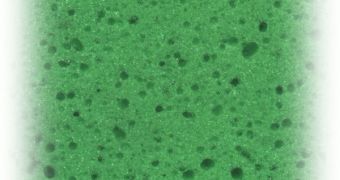A new type of material, developed by experts at the Northwestern University, has the potential to revolutionize a number of chemical applications, its inventors say. The black and brittle sponge-like structure is freeze-dried, like the ice cream astronauts eat, and has the ability to remove the chemical mercury from heavily polluted water, as well as to easily separate hydrogen from a host of other gases. In addition, it acts as a very efficient catalyst in removing sulfur from crude oil, a feat that may result in oil companies creating less polluting products. This could save the environment and also bring financial gains to these businesses, when they go under carbon cap-and-trade systems.
The process of hydrodesulfurization (HDS) is a very important part of modern-day petroleum processing, and is also employed in such fields as cleaning automobile, jet and diesel fuels. Without HDS, large concentrations of sulfur would remain in these substances, which would have disastrous consequences on the environment. Sulfur has been identified as one of the main causes for acid rains. For the moment, experts in the scientific community say, there are no better ways of purging sulfur than the ones currently employed, which have been optimized to the greatest extent possible.
But the NU team, working together with colleagues from the Western Washington University, have recently announced that their new material is twice as effective as existing HDS catalysts. The sponge-like structure, which is, in fact, a chalcogels (an NU-devised class of materials made from networks of metal-sulfur atoms with very high surface areas), is called cobalt-molybdenum-sulfur chalcogel. The compound is resistant to air and water, and can also be used as a powder, if the situation demands it.
“I was surprised at the impressive activity of our catalyst, given how difficult it has been to improve HDS. In principle, our catalyst could process and desulfurize twice as much crude oil as the same amount of conventional catalyst. We currently are conducting studies to see how the catalyst operates under more commercial conditions,” Mercouri G. Kanatzidis, who is the senior author of a new study detailing the finds, published online in the May 17th issue of the journal Nature Chemistry, said.
“We succeeded in doing something very difficult: eliminating the platinum and only using common materials to create a gel. We found the proper conditions to get the properties we wanted. The key was changing the solvent from water to formamide,” the author added. The study is called “Spongy Chalcogels of Nonplatinum Metals Act as Effective Hydrodesulfurization Catalysts.”

 14 DAY TRIAL //
14 DAY TRIAL //